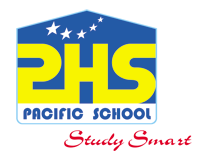PHS School Thinking...
While Vietnam is seeing a massive wave of mega-schools—very large schools with thousands of students—advanced countries have been developing the small-school model for over 40 years. The founders of Pacific Primary and High School (PHS) studied and learned from models in the U.S., Japan, and European countries to establish a school based on this advantageous model.
Small schools typically have a total enrollment ranging from under 100 to 400 students, with class sizes from 8 to 15 students. Educators highly regard this model as offering significantly better educational quality compared to large-enrollment schools. The comparative evaluations against large schools include:
Further benefits of the small-school model, as researched by UCLA (University of California, Los Angeles), show that these schools foster strong connections between families, the school, and the community. They develop good educational quality and community responsibility, improve working conditions, and increase the professional dedication and job satisfaction of teachers and staff.
The actual working environment at Pacific School (PHS) demonstrates that the school receives extensive support from domestic and international businesses and organizations. The team of teachers and staff maintains stable, long-term employment in a culture of friendliness and mutual trust. The management structure is lean, and internal conflicts are avoided because issues are resolved quickly and support is provided promptly. Notably, foreign teachers, who are very familiar with this school model in their home countries, are consistently satisfied with their work and actively cooperate in all PHS activities.
In the U.S., the small-school model has become increasingly common since the 1980s and has received substantial funding from philanthropists. The Bill and Melinda Gates Foundation invested over $1 billion over five years to establish small-scale schools in Boston, Chicago, Milwaukee, and other cities. In New York, some schools are being restructured to have a maximum of $400$ students.
Deborah Meier (an American educator) observed: “With small numbers of students, teachers are often sitting down with students, creating a culture of shared responsibility and decision-making. This must become central to schools if we want to teach children to be strong members of a democracy—they need to see teachers acting democratically.”
The organization and management of a school, its educational activities, and the conduct of teachers play a significant role in student awareness and development. Therefore, a small scale is the optimal choice for effectively managing educational quality, especially given the current limitations in human resource quality within Vietnam’s education sector.

Primary, middle and high school Pacific is a Vietnamese-English bilingual school that is organized according to international standards to develop key competencies, help students integrate with the background. global advanced education and maximum development of personal capacity.